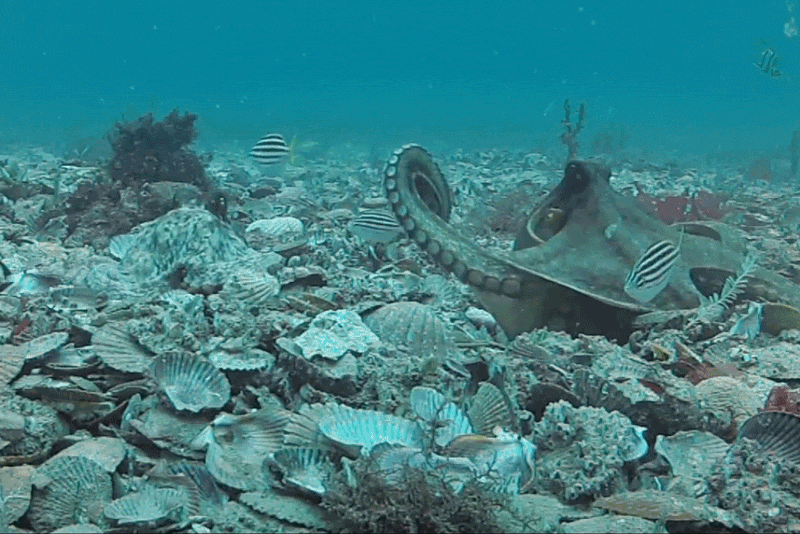Cephalopods living unusually close together have been filmed throwing shells, algae and silt — sometimes at another octopus.
For the first time, octopuses have been spotted throwing things — at each other.
Octopuses are known for their solitary nature, but in Jervis Bay, Australia, the gloomy octopus (Octopus tetricus) lives at very high densities. A team of cephalopod researchers decided to film the creatures with underwater cameras to see whether — and how — they interact.
Once the researchers pulled the cameras out of the water, they sat down to watch more than 20 hours of footage. “I call it octopus TV,” laughs co-author David Scheel, a behavioural ecologist at Alaska Pacific University in Anchorage. One behaviour stood out: instances in which the eight-limbed creatures gathered shells, silt or algae with their arms — and then hurled them away, propelling them with water jetted from their siphon. And although some of the time it seemed that they were just throwing away debris or food leftovers, it did sometimes appear that they were throwing things at each other.
The team found clues that the octopuses were deliberately targeting one another. Throws that made contact with another octopus were relatively strong and often occurred when the thrower was displaying a uniform dark or medium body colour. Another clue: sometimes the octopuses on the receiving end ducked. Throws that made octo-contact were also more likely to be accomplished with a specific set of arms, and the projectile was more likely to be silt.

A gloomy octopus throws silt at another octopus as it approaches. For hitting fellow octopuses, silt is the projectile of choice.Credit: P. Godfrey-Smith et al./PLOS ONE (CC BY 4.0)
“We weren’t able to try and assess what the reasons might be,” Scheel cautions. But throwing, he says, “might help these animals deal with the fact that there are so many octopuses around”. In other words, it is probably social.
Tamar Gutnick, an octopus neurobiologist at the University of Naples Federico II in Italy, says the work opens a new door for inquiries into the social lives of these famously clever animals. “The environment for these specific octopuses is such that they have this interaction between individuals,” she says. “It’s communication, in a way.”
doi: https://doi.org/10.1038/d41586-022-03592-w
- Karlston and alf9872000
-

 2
2



Recommended Comments
There are no comments to display.
Join the conversation
You can post now and register later. If you have an account, sign in now to post with your account.
Note: Your post will require moderator approval before it will be visible.